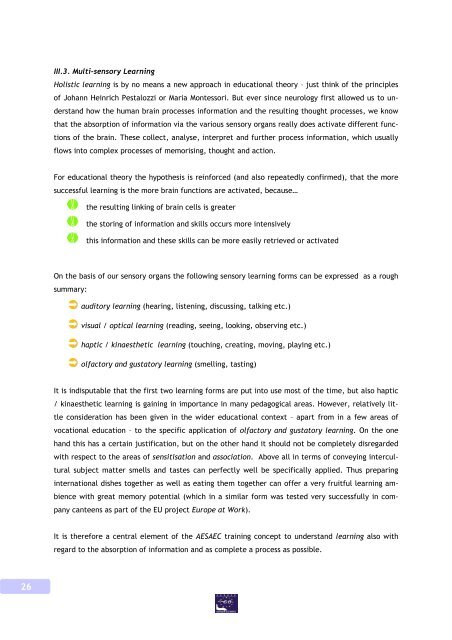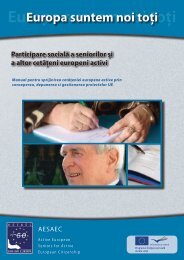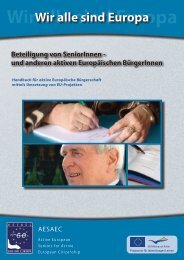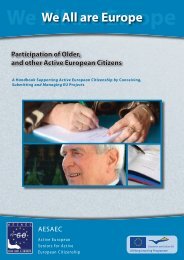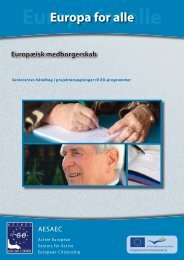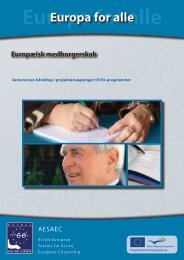We All are Europe - AESAEC
We All are Europe - AESAEC
We All are Europe - AESAEC
You also want an ePaper? Increase the reach of your titles
YUMPU automatically turns print PDFs into web optimized ePapers that Google loves.
III.3. Multi-sensory Learning<br />
Holistic learning is by no means a new approach in educational theory – just think of the principles<br />
of Johann Heinrich Pestalozzi or Maria Montessori. But ever since neurology first allowed us to understand<br />
how the human brain processes information and the resulting thought processes, we know<br />
that the absorption of information via the various sensory organs really does activate different functions<br />
of the brain. These collect, analyse, interpret and further process information, which usually<br />
flows into complex processes of memorising, thought and action.<br />
For educational theory the hypothesis is reinforced (and also repeatedly confirmed), that the more<br />
successful learning is the more brain functions <strong>are</strong> activated, because…<br />
the resulting linking of brain cells is greater<br />
the storing of information and skills occurs more intensively<br />
this information and these skills can be more easily retrieved or activated<br />
On the basis of our sensory organs the following sensory learning forms can be expressed as a rough<br />
summary:<br />
auditory learning (hearing, listening, discussing, talking etc.)<br />
visual / optical learning (reading, seeing, looking, observing etc.)<br />
haptic / kinaesthetic learning (touching, creating, moving, playing etc.)<br />
olfactory and gustatory learning (smelling, tasting)<br />
It is indisputable that the first two learning forms <strong>are</strong> put into use most of the time, but also haptic<br />
/ kinaesthetic learning is gaining in importance in many pedagogical <strong>are</strong>as. However, relatively little<br />
consideration has been given in the wider educational context – apart from in a few <strong>are</strong>as of<br />
vocational education – to the specific application of olfactory and gustatory learning. On the one<br />
hand this has a certain justification, but on the other hand it should not be completely disregarded<br />
with respect to the <strong>are</strong>as of sensitisation and association. Above all in terms of conveying intercultural<br />
subject matter smells and tastes can perfectly well be specifically applied. Thus preparing<br />
international dishes together as well as eating them together can offer a very fruitful learning ambience<br />
with great memory potential (which in a similar form was tested very successfully in company<br />
canteens as part of the EU project <strong>Europe</strong> at Work).<br />
It is therefore a central element of the <strong>AESAEC</strong> training concept to understand learning also with<br />
regard to the absorption of information and as complete a process as possible.<br />
26


